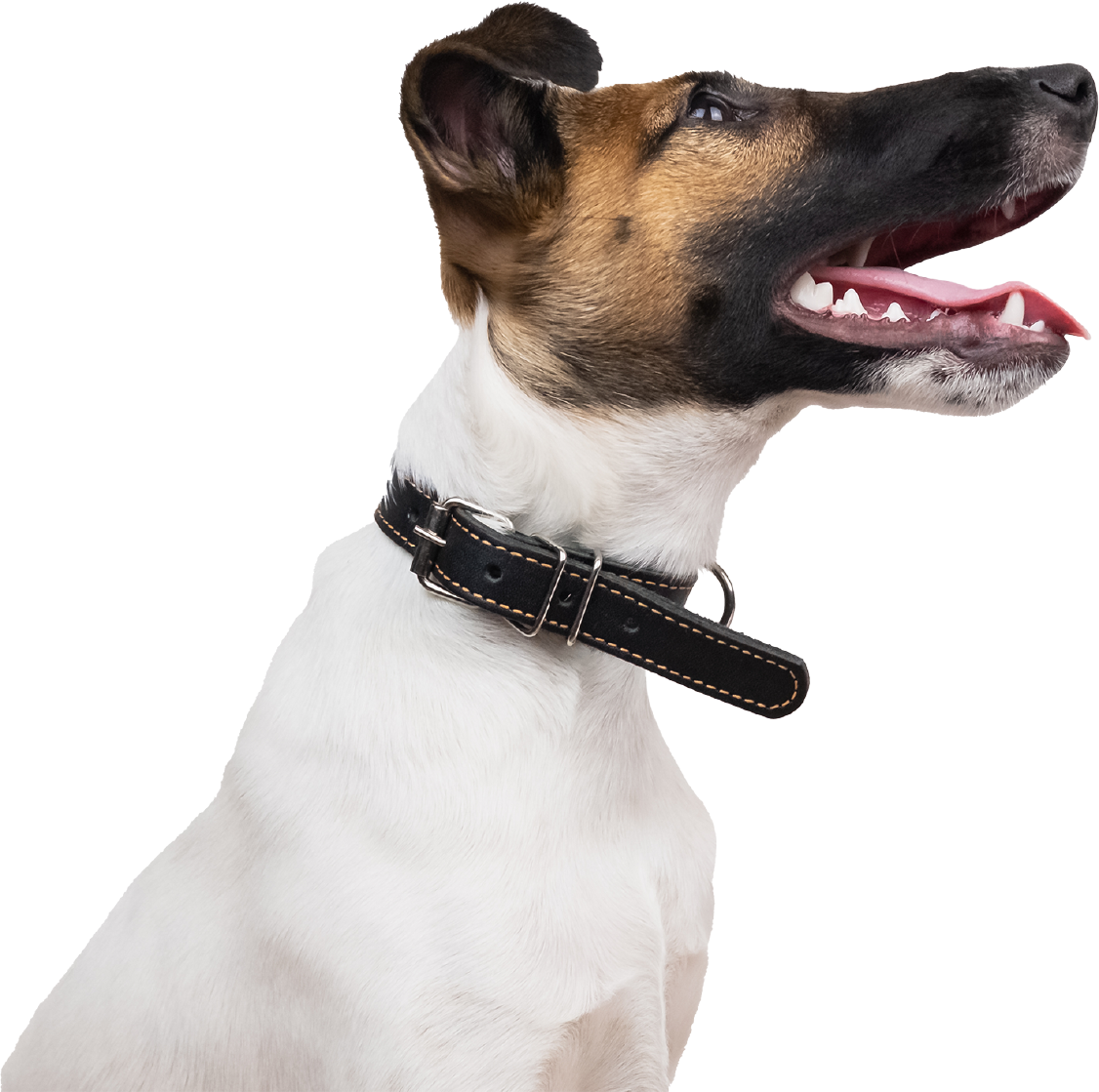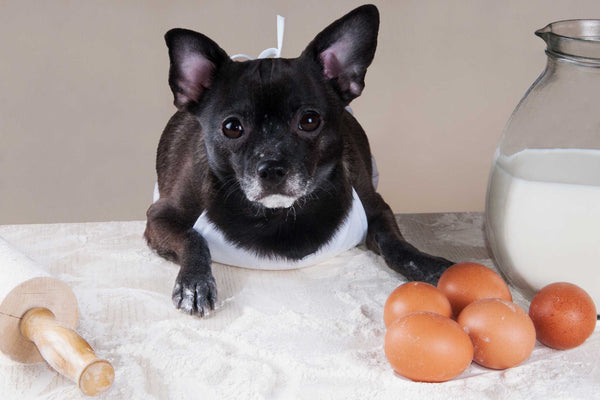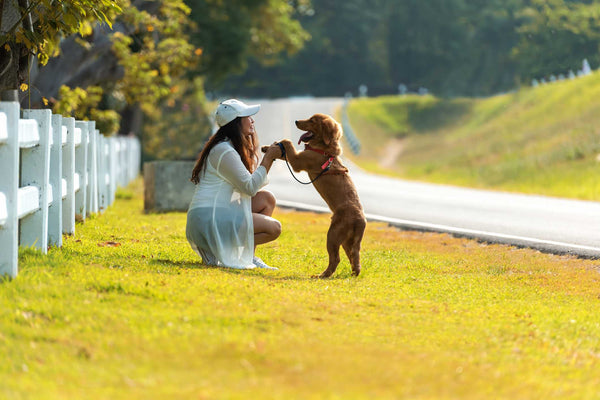Improving Your Dog’s Leash Reactivity

Having a dog who is reactive on the leash can be frustrating, confusing, and even embarrassing if your dog barks and lunges in what looks like an aggressive manner when another dog approaches. It can be especially perplexing if your dog actually does enjoy being around other dogs when they are not on leash in places like a dog park. This is a common behavioral issue among dogs because the leash acts as a restriction, making the dog feel trapped with no escape if desired. Leash reactivity also occurs because dogs are forced to meet head-on, whereas if they were in a natural environment off leash, they would typically greet each other from the side, circling and sniffing.
There are several reasons for leash reactivity, mainly: fear, frustration, or seeking conflict. Whatever the reason, there are ways to train the behavior and see improvement with the right methods, consistency, and practice. You should also always check with a veterinarian in the case that leash reactivity is not caused by any of the above, but rather could be due to a medical issue.
If your dog is leash reactive, especially in the event their reactivity becomes dangerous by biting or attacking, or even if they are not as receptive as you’d expect over time, working with a trainer would be the best course of action. A trainer should also be consulted if you are confused about what action to take, and if your dog completely ignores every command you give them even with consistent practice. You may then need to regroup with a certified trainer. These steps are a great place to start for your leash reactive dog, and you can gauge their progress after they are consistently implemented daily over a period of time.
- Positive Training and Consistency
Your dog needs consistency when working to improve a behavior. In the same way that humans need practice to improve a skill, you should never expect your dog’s behavior to change overnight. It’s also never a good idea to punish a bad behavior as that only acts as a Band-Aid. Instead, getting to the root of the issue and using positive reinforcement is most effective. If you punish your dog for growling or lunging you are only teaching them not to growl without adequately addressing why they do it in the first place, which can be dangerous.
To train your dog not to react on leash, first start out slow. Take your dog to an open park or space where other dogs pass regularly. Start in a stationary position, and each time you see a dog approaching from a distance, wait for your dog to notice them. Then, use a marker word like “yes” to get your dog’s attention. When they turn to you, reward them with a treat and continue this way as long as the dog is in view, getting your dog to look back at you each time. This will teach your dog that others approaching is a positive thing while also training them that you, the handler, should have their attention more than any distraction or trigger. If your dog does not look back at you during this first step, and especially if they react to the other dog negatively, you are too close to the trigger. Ensure that you start slow, and gradually work your way up to more distractions and less distance once you are consistently getting your dog’s attention each time.
You may even have to initially start in your home and use a toy or object as the trigger if starting the training near passing dogs is too much too fast. You will use the same process of getting their attention and rewarding once they turn away from the distraction to you. Listen to what your dog is telling you and adjust accordingly depending on what they are ready to handle. Patience and perseverance are needed when modifying a behavior!
- Remain Calm when Another Dog is Approaching
Since you know your dog is reactive on the leash, you might choke up or tighten your grip when you see another dog approaching. This is a natural instinct, however, it is sending the wrong message to your dog because they then feel your tension, which tells them they should be anxious or ready to fight. Try to take a relaxed grip, remain calm, and implement the other strategies to improve the behavior over time. If you do have to pass another dog, always give a wide distance, passing from the side, especially while you are working on their training to limit instances of their reactivity.
- Don’t Let Your Dog Meet Any Dogs when on Leash
Even if your dog is not reacting to the approaching dog and it seems like they both want to greet each other, it’s best to avoid any meetings on leash due to the dogs feeling like they are trapped and unable to get away. They are also forced to meet head-on and make direct eye contact, which is not how they would normally greet each other off the leash. Dog greetings should be saved only for open spaces with no leashes involved so that everyone feels comfortable and can have fun without the stress!
Hopefully you now feel like you have a place to start in terms of working on your dog’s leash reactivity. Remember to always consult with your vet to ensure leash reactivity is not due to a medical issue. And seek assistance from a certified trainer if the behavior does not improve, if a dangerous behavioral incident has occurred, or if you simply need more guidance going forward! We want only fun, stress-free walks for you and your best pal!
 Shay Siegel is a young adult author, freelance writer, and editor from Long Island, NY. She has a BA from Tulane University and an MFA in Writing from Sarah Lawrence College. Always a lover of animals, Shay had several cats growing up. She's now a dog mom to the snuggliest rescue pit bull, Bernie. She enjoys writing on a variety of topics and sharing her love and knowledge of animals with others!
Shay Siegel is a young adult author, freelance writer, and editor from Long Island, NY. She has a BA from Tulane University and an MFA in Writing from Sarah Lawrence College. Always a lover of animals, Shay had several cats growing up. She's now a dog mom to the snuggliest rescue pit bull, Bernie. She enjoys writing on a variety of topics and sharing her love and knowledge of animals with others!

Ready to gain some healthy superpowers?
Looking to support your dogs immune system or digestive health? Need joint or calming support?
Let Waggy Show you the way

